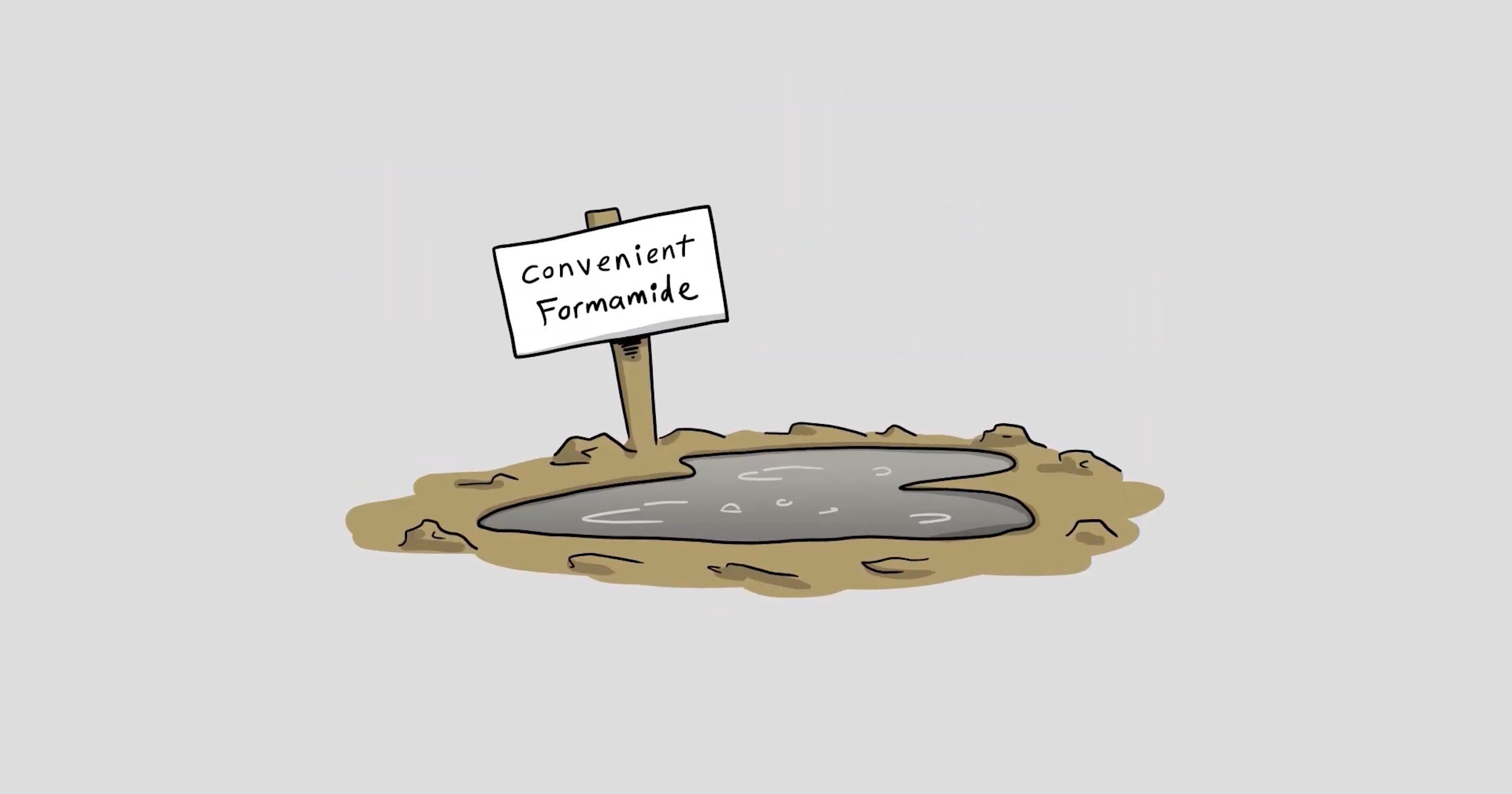 Intelligent Design
Intelligent Design
 Life Sciences
Life Sciences
Long Story Short — A Strikingly Unnatural Property of Biopolymers

The new episode of Long Story Short premiered yesterday, and I have been commenting on the underlying science. (See my post from yesterday, “Long Story Short — Did Purely Natural Processes Produce Biopolymers?”) Another strikingly unnatural property of biopolymers is homolinkage — perfectly consistent bonding between the monomers.
Every biology textbook depicts the familiar double helix structure of DNA. This produces the false impression that the double helix structure is the preferred way for the components to align naturally. In reality, the monomers can bond with each other in a large variety of ways and unwanted molecules can interfere with the required purity. Even in a very short DNA of just two nucleotides, there are dozens of incorrect possible arrangements of the components, and only one correct arrangement. The probability of consistent arrangement decreases exponentially as the DNA lengthens. If natural processes could polymerize these monomers, the result would be chaotic “asphalt,” not highly organized, perfectly consistent biopolymers. Think about it — if monomers spontaneously polymerized within cells, the cell would die because all monomers would be combined into useless random arrangements.
Scientists have been trying for decades to get monomers to link up into biopolymers under “prebiotically plausible conditions.” Back in 1993, they produced chains of nucleotides up to 11 monomers in length, although one-third of the phosphodiester bonds were incorrect.1 Thirteen years later, they claimed to produce chains with up to 50 nucleotides.2 Unfortunately, the latter claimed results were not reproducible because their measurement technique couldn’t separate true polymers from aggregates of separate molecules.3 Whether scientists can produce chains of 11 or 50 monomers is of little relevance, because the simplest known forms of autonomously reproducing life have more than 500,000 base pairs of DNA with perfectly consistent linkage of components. According to what we know about natural laws, the biopolymers of life are extraordinarily unnatural.
Natural Degradation and Required Repair of RNA and DNA
RNA is hypothesized to have preceded DNA, replicating itself and growing in complexity over millions of years toward the origin of life. But these expectations clearly contradict what we know about natural laws. Anyone who works with RNA knows that it is an extremely fragile molecule that degrades in a matter of hours at room temperature, even in the absence of RNases. RNA is best preserved as a precipitate in ethanol, stored at -70oC, and protected from light.4 Also, a true self-replicating RNA has never been observed. Some propose that small peptides or RNA loops helped to stabilize the RNA, but these same factors would further confound the possibility of RNA replication.
If natural processes could produce a lengthy molecule of DNA or RNA, complex repair mechanisms would be required to preserve the information content. Fortunately, all living things are equipped with complex enzymatic repair mechanisms. Unfortunately, the information to produce these repair mechanisms must be stored within the DNA/RNA. But the information in the DNA/RNA can’t be maintained without the repair mechanisms. So, you can’t have long strands of DNA/RNA unless it can repair itself. But it can’t repair itself unless you have long strands of DNA/RNA. This is Eigen’s paradox: a chicken-and-egg problem that has been around, without a solution, for fifty years.5
Seventy Years After Miller-Urey
If purely natural processes started the first life, complex biopolymers like RNA, DNA, proteins, and glycans must have formed naturally. But we know enough about the natural laws that govern chemical and biochemical reactions to know better. The essential presence of long, homochiral, homolinked biopolymers in a water solution, for all known life forms, is astoundingly unnatural. It has been seventy years since the Miller-Urey experiment produced amino acids. At that time, we didn’t even know the structure of DNA. Since then, we have learned a great deal about the extremely unnatural properties of biopolymers, which explains why almost no discernable progress has been made toward producing biopolymers via prebiotic processes in laboratories.
Notes
- Ferris, J. P. and G. Ertem, Montmorillonite catalysis of RNA oligomer formation in aqueous solution. A model for the prebiotic formation of RNA. J Am Chem Soc, 1993. 115: 12270–12275.
- Huang, W. and J. P. Ferris, One-step, regioselective synthesis of up to 50-mers of RNA oligomers by montmorillonite catalysis. J Am Chem Soc, 2006. 128(27): 8914–8919.
- Burcar BT, Cassidy LM, Moriarty EM, Joshi PC, Coari KM, McGown LB. Potential Pitfalls in MALDI-TOF MS Analysis of Abiotically Synthesized RNA Oligonucleotides. Origins of Life and Evolution of Biospheres, 2013. 43: 247–261.
- https://lifescience.roche.com/en_us/articles/precautions-for-handling-of-rna.html
- Eigen M. Selforganization of matter and evolution of biological Macromolecules. Naturwissenschaften, 1971. 58: 465–523.
